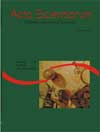<b>Use and conservation of mangabeira remainders by extractivist populations in Barra dos Coqueiros, State of Sergipe</b> - DOI: 10.4025/actascihumansoc.v30i2.3347
Keywords:
traditional knowledge, mangaba (Hancornia speciosa Gomes), female collectors, exploration
Abstract
This paper aimed to analyze how the extractivist population use and conserve the magabeira remainders in the state of Sergipe (Northeastern Brazil). The research methodology was predominantly qualitative, consisting of the surveying of primary (structured and semi-structured interviews, participative analysis) and secondary data, organized to constitute a general exploration picture, valuing the conservation action plans, use and commercialization of remainder crops. The data was analyzed focusing on the characteristics of the mangaba female collectors already depicted in the literature (Mota e Silva Júnior, 2003; Mota et al., 2003a e b). The genre perspective and the past/present relation were also considered in the analysis. The main conclusions show that they have been able to manage the genetic resources of that species, through a traditional handling perspective that combines action and knowledge (according to the natural resources features, seasons, access to remainders, etc.) in a context of increasing valuation of the fruit in both local and regional markets, but also considering the threats (tourism, agriculture and real estate speculation).Downloads
Download data is not yet available.
Published
2008-12-18
How to Cite
Mota, D. M. da, & Santos, J. V. dos. (2008). <b>Use and conservation of mangabeira remainders by extractivist populations in Barra dos Coqueiros, State of Sergipe</b> - DOI: 10.4025/actascihumansoc.v30i2.3347. Acta Scientiarum. Human and Social Sciences, 30(2), 173-180. https://doi.org/10.4025/actascihumansoc.v30i2.3347
Issue
Section
Social Sciences
DECLARATION OF ORIGINALITY AND COPYRIGHTS
I Declare that current article is original and has not been submitted for publication, in part or in whole, to any other national or international journal.
The copyrights belong exclusively to the authors. Published content is licensed under Creative Commons Attribution 4.0 (CC BY 4.0) guidelines, which allows sharing (copy and distribution of the material in any medium or format) and adaptation (remix, transform, and build upon the material) for any purpose, even commercially, under the terms of attribution.
Read this link for further information on how to use CC BY 4.0 properly.























